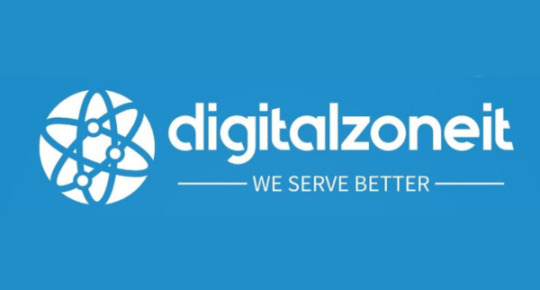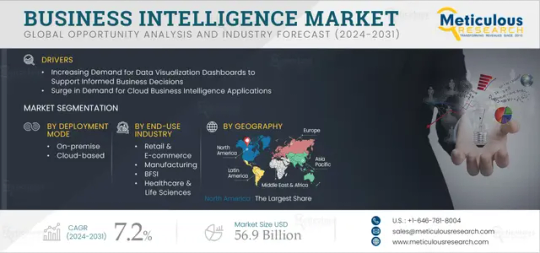#data mining solutions
Explore tagged Tumblr posts
Text
Elevate your business's customer experience by leveraging data mining to gain deeper insights into customer preferences and behaviors. Through effective data analysis, you can personalize each interaction, offering tailored solutions that enhance satisfaction. Data mining enables businesses to understand customer needs on a granular level, fostering stronger relationships and encouraging loyalty.
0 notes
Text
Revealing Unseen Insights: An In-Depth Manual on Data Analytics Tools and Techniques
Data analytics is the process of collecting, cleaning, analyzing, and interpreting data to gain insights that can be used to make better decisions. It is a powerful tool that can be used to improve businesses, organizations, and even our own lives.

There are many different data analytics tools and techniques available, each with its own strengths and weaknesses. Some of the most common tools include:
Data visualization: This involves creating charts, graphs, and other visual representations of data to make it easier to understand.
Statistical analysis: This involves using statistical methods to identify patterns and trends in data.
Machine learning: This involves using algorithms to learn from data and make predictions.
Natural language processing: This involves using algorithms to analyze text data.
The best data analytics tool or technique for a particular situation will depend on the specific goals of the analysis. For example, if you are trying to identify patterns in customer behavior, you might use data visualization or statistical analysis. If you are trying to build a model to predict future sales, you might use machine learning.
In this blog post, we will provide an in-depth overview of the most common data analytics tools and techniques. We will also discuss the steps involved in conducting a data analytics project, from data collection to interpretation.
The Steps of a Data Analytics Project
A data analytics project typically follows these steps:
Define the problem. What are you trying to achieve with your data analysis? What are your specific goals?
Collect the data. This may involve gathering data from internal sources, such as customer records or sales data, or from external sources, such as social media data or government datasets.
Clean the data. This involves removing any errors or inconsistencies in the data.
Analyze the data. This is where you use the data analytics tools and techniques to identify patterns and trends.
Interpret the results. This involves making sense of the findings and drawing conclusions.
Communicate the results. This involves sharing your findings with the stakeholders who need to know.
Data Analytics Tools and Techniques
Here is a brief overview of some of the most common data analytics tools and techniques:
Data visualization: This involves creating charts, graphs, and other visual representations of data to make it easier to understand. Some popular data visualization tools include Tableau, QlikView, and Microsoft Power BI.
Statistical analysis: This involves using statistical methods to identify patterns and trends in data. Some popular statistical analysis tools include SPSS, SAS, and R.
Machine learning: This involves using algorithms to learn from data and make predictions. Some popular machine learning tools include TensorFlow, scikit-learn, and Keras.
Natural language processing: This involves using algorithms to analyze text data. Some popular natural language processing tools include spaCy, NLTK, and Stanford CoreNLP.
Conclusion
Data analytics is a powerful tool that can be used to reveal unseen insights. By understanding the different tools and techniques available, you can choose the right ones for your specific needs. And by following the steps involved in a data analytics project, you can ensure that your analysis is successful.
I hope this blog post has been helpful. If you have any questions, please feel free to leave a comment below.
#Data analysis tools#Business data insights#Big data analytics#Data mining solutions#Data analytics consulting#Data analytics services
0 notes
Text
Data mining is a process used to extract useful information from raw and scattered data to develop more effective marketing strategies. This helps them seamlessly utilize their data to drive valuable insights that largely contribute to increasing customer loyalty, uncovering hidden profitability and reducing client churn rate. Let us look at how data mining techniques benefit businesses.
0 notes
Text
Best Data Mining Company in India – Your Trusted Technology Partner
As the best data mining company in India, Devant IT Solutions is committed to helping businesses uncover hidden patterns and actionable insights from vast datasets. With advanced algorithms, predictive analytics, and deep industry knowledge, we empower organizations to make informed decisions, optimize operations, and stay ahead of the competition. Our team ensures data accuracy, integrity, and relevance, making us a preferred partner for enterprises across sectors including finance, retail, healthcare, and education.
At Devant IT Solutions, we combine cutting-edge tools with domain expertise to deliver tailored data mining solutions that drive measurable business outcomes. Whether it’s customer behavior analysis, fraud detection, or market trend prediction, our services are designed to enhance strategic planning and operational efficiency. Contact us today to learn how we can help your business turn raw data into powerful insights.

#top notch data mining company#data mining service providers#Best Data Mining Company in India#devant it solutions#devant
0 notes
Text
Web Scraping in Healthcare: Gathering Medical Directories and Drug Databases

Web scraping in the healthcare industry is essential as medical professionals can hand in accurate and efficient data for research, informed decisions and enhance patient care. Data scraping helps in drug database and medical directories access. Read more in detail about importance.
#web scraping services#data scraping services#data extraction service#web scraping company#data scraping service#data extraction solutions#data scraping companies#web scraping companies#web scraping services usa#web data mining services#web scraping services india
1 note
·
View note
Text

Top Data Mining Companies in Coimbatore | Apeiro Solutions India
Looking for a reliable data mining companies in Coimbatore? Apeiro Solutions offers customized services to transform data into actionable insights for business growth.
0 notes
Text
Deep Learning Solutions for Real-World Applications: Trends and Insights
Deep learning is revolutionizing industries by enabling machines to process and analyze vast amounts of data with unprecedented accuracy. As AI-powered solutions continue to advance, deep learning is being widely adopted across various sectors, including healthcare, finance, manufacturing, and retail. This article explores the latest trends in deep learning, its real-world applications, and key insights into its transformative potential.
Understanding Deep Learning in Real-World Applications
Deep learning, a subset of machine learning, utilizes artificial neural networks (ANNs) to mimic human cognitive processes. These networks learn from large datasets, enabling AI systems to recognize patterns, make predictions, and automate complex tasks.
The adoption of deep learning is driven by its ability to:
Process unstructured data such as images, text, and speech.
Improve accuracy with more data and computational power.
Adapt to real-world challenges with minimal human intervention.
With these capabilities, deep learning is shaping the future of AI across industries.

Key Trends in Deep Learning Solutions
1. AI-Powered Automation
Deep learning is driving automation by enabling machines to perform tasks that traditionally required human intelligence. Industries are leveraging AI to optimize workflows, reduce operational costs, and improve efficiency.
Manufacturing: AI-driven robots are enhancing production lines with automated quality inspection.
Customer Service: AI chatbots and virtual assistants are improving customer engagement.
Healthcare: AI automates medical imaging analysis for faster diagnosis.
2. Edge AI and On-Device Processing
Deep learning models are increasingly deployed on edge devices, reducing dependence on cloud computing. This trend enhances:
Real-time decision-making in autonomous systems.
Faster processing in mobile applications and IoT devices.
Privacy and security by keeping data local.
3. Explainable AI (XAI)
As deep learning solutions become integral to critical applications like finance and healthcare, explainability and transparency are essential. Researchers are developing Explainable AI (XAI) techniques to make deep learning models more interpretable, ensuring fairness and trustworthiness.
4. Generative AI and Creative Applications
Generative AI models, such as GPT (text generation) and DALL·E (image synthesis), are transforming creative fields. Businesses are leveraging AI for:
Content creation (automated writing and design).
Marketing and advertising (personalized campaigns).
Music and video generation (AI-assisted production).
5. Self-Supervised and Few-Shot Learning
AI models traditionally require massive datasets for training. Self-supervised learning and few-shot learning are emerging to help AI learn from limited labeled data, making deep learning solutions more accessible and efficient.
Real-World Applications of Deep Learning Solutions
1. Healthcare and Medical Diagnostics
Deep learning is transforming healthcare by enabling AI-powered diagnostics, personalized treatments, and drug discovery.
Medical Imaging: AI detects abnormalities in X-rays, MRIs, and CT scans.
Disease Prediction: AI models predict conditions like cancer and heart disease.
Telemedicine: AI chatbots assist in virtual health consultations.
2. Financial Services and Fraud Detection
Deep learning enhances risk assessment, automated trading, and fraud detection in the finance sector.
AI-Powered Fraud Detection: AI analyzes transaction patterns to prevent cyber threats.
Algorithmic Trading: Deep learning models predict stock trends with high accuracy.
Credit Scoring: AI evaluates creditworthiness based on financial behavior.
3. Retail and E-Commerce
Retailers use deep learning for customer insights, inventory optimization, and personalized shopping experiences.
AI-Based Product Recommendations: AI suggests products based on user behavior.
Automated Checkout Systems: AI-powered cameras and sensors enable cashier-less stores.
Demand Forecasting: Deep learning predicts inventory needs for efficient supply chain management.
4. Smart Manufacturing and Industrial Automation
Deep learning improves quality control, predictive maintenance, and process automation in manufacturing.
Defect Detection: AI inspects products for defects in real-time.
Predictive Maintenance: AI predicts machine failures, reducing downtime.
Robotic Process Automation (RPA): AI automates repetitive tasks in production lines.
5. Transportation and Autonomous Vehicles
Self-driving cars and smart transportation systems rely on deep learning for real-time decision-making and navigation.
Autonomous Vehicles: AI processes sensor data to detect obstacles and navigate safely.
Traffic Optimization: AI analyzes traffic patterns to improve city traffic management.
Smart Logistics: AI-powered route optimization reduces delivery costs.
6. Cybersecurity and Threat Detection
Deep learning strengthens cybersecurity defenses by detecting anomalies and preventing cyber attacks.
AI-Powered Threat Detection: Identifies suspicious activities in real time.
Biometric Authentication: AI enhances security through facial and fingerprint recognition.
Malware Detection: Deep learning models analyze patterns to identify potential cyber threats.
7. Agriculture and Precision Farming
AI-driven deep learning is improving crop monitoring, yield prediction, and pest detection.
Automated Crop Monitoring: AI analyzes satellite images to assess crop health.
Smart Irrigation Systems: AI optimizes water usage based on weather conditions.
Disease and Pest Detection: AI detects plant diseases early, reducing crop loss.
Key Insights into the Future of Deep Learning Solutions
1. AI Democratization
With the rise of open-source AI frameworks like TensorFlow and PyTorch, deep learning solutions are becoming more accessible to businesses of all sizes. This democratization of AI is accelerating innovation across industries.
2. Ethical AI Development
As AI adoption grows, concerns about bias, fairness, and privacy are increasing. Ethical AI development will focus on creating fair, transparent, and accountable deep learning solutions.
3. Human-AI Collaboration
Rather than replacing humans, deep learning solutions will enhance human capabilities by automating repetitive tasks and enabling AI-assisted decision-making.
4. AI in Edge Computing and 5G Networks
The integration of AI with edge computing and 5G will enable faster data processing, real-time analytics, and enhanced connectivity for AI-powered applications.
Conclusion
Deep learning solutions are transforming industries by enhancing automation, improving efficiency, and unlocking new possibilities in AI. From healthcare and finance to retail and cybersecurity, deep learning is solving real-world problems with remarkable accuracy and intelligence.
As technology continues to advance, businesses that leverage deep learning solutions will gain a competitive edge, driving innovation, efficiency, and smarter decision-making. The future of AI is unfolding rapidly, and deep learning remains at the heart of this transformation.
Stay ahead in the AI revolution—explore the latest trends and insights in deep learning today!
#Deep learning solutions#Big Data and Data Warehousing service#Data visualization#Predictive Analytics#Data Mining#Deep Learning
1 note
·
View note
Text
An Affordable and Quick Solution for B2B Businesses
An Affordable and Quick Solution for B2B Businesses
Target your high-potential prospect: First, you will need to target your prospect who might be your customer. You can research your market to target a high-potential prospect. Based on your target market you can target your right prospect. This is a very important process because a prospect can convert into a customer. If you target high-potential prospects you can convert them easily with an easy process. That can help you increase your sales quickly. You can hire a top-rated agency to market research and target high-potential prospects for you.
Gather Contact Information of your high-potential prospects: After targeting your high-potential prospects, you will need to gather their contact information, such as Phone numbers, Email addresses, etc. Using this information, you can reach out to them with your Services or Products and offer them. You can get many individuals or agencies on your side who build contact lists, email lists, and prospect lists based on your target audience. You can hire them to build a prospect contact list based on your targeted audience.

#List Building#Data Entry#Data Scraping#Lead Generation#Contact List#Data Mining#Data Extraction#Data Collection#Prospect List#Accuracy Verification#LinkedIn Sales Navigator#Sales Lead Lists#Virtual Assistance#Error Detection#Market Research#B2B business growth solution.#b2blead#salesleads#emaillist#contactlist#prospectlist#salesboost#businessgrowth#b2b
1 note
·
View note
Text
Discover the key advantages of collaborating with a healthcare data mining company. Enhance decision-making, improve patient outcomes, and streamline operational efficiency. Leverage data analytics to uncover trends, reduce costs, and maintain compliance with regulations. Partnering with experts in data mining ensures accurate insights, driving innovation and fostering a culture of continuous improvement in healthcare services. Embrace the future of healthcare with strategic data partnerships.
0 notes
Text
https://consulting.tatasteel.com/why-is-geological-mapping-crucial-in-early-mining-exploration-why-are-consultants-essential/
Why Geological Mapping is Crucial in Early Mining Exploration: The Role of Consultants Learn why geological mapping is key in early mining exploration and how TSIC's consulting boosts efficiency, sustainability, and risk management.
#Mining and Exploration#Mining Consulting#Mining Consulting Services#Automation in Mining#Data Analytics in Mining#Digital Twins#Drone Technology in Mining#Mine Safety#Mining Robotics#Mining Technology#Predictive Maintenance#Renewable Energy in Mining#Sustainable Mining#Tata Steel Consulting Services#TSIC#TSIC Mining Solutions
0 notes
Text
Enhancing Safety in the Mining Industry: The Role of Advanced Telematics Solutions

The mining industry faces significant challenges in ensuring the safety of its workforce amidst hazardous working conditions and complex operational environments. Despite stringent safety regulations and protocols, accidents and incidents continue to pose risks to personnel and assets. In this context, the adoption of advanced telematics solutions emerges as a critical strategy to enhance safety standards and mitigate risks within mining operations.
In this article, we will discuss the role of telematics technology, its key features, applications, and benefits in the mining industry.
Understanding the Role of Telematics Technology in the Mining Industry
Telematics systems employ a combination of hardware and software components to collect, transmit, and analyse data from vehicles and assets in real-time. The GPS tracking devices installed in vehicles capture location coordinates, speed, and route information, which is transmitted to a centralised platform via cellular or satellite networks. In addition, onboard sensors and diagnostics systems monitor vehicle performance metrics such as engine health, fuel consumption, and maintenance status.
This data is then processed and analysed using advanced algorithms and fleet telematic analytics tools to generate actionable insights and performance reports for fleet managers and stakeholders. By providing visibility into key operational parameters and safety metrics, mining telematics systems enable mining companies to proactively identify risks, implement preventive measures, and optimise resource allocation to enhance safety and efficiency across their operations.
Key Features of Telematics Fleet Management System for Mining Operations
Live Location Tracking: Track the real-time location of vehicles and equipment, enabling better fleet management and resource allocation.
Rash Driving Alerts: Receive alerts for instances of aggressive or unsafe driving behaviour, allowing for immediate intervention and corrective action.
Accident Detection: Detect accidents or collisions as they occur, enabling rapid response and assistance to affected personnel.
Autonomous Emergency Braking (AEB): Automatically apply brakes in emergency situations to prevent or mitigate collisions, enhancing overall safety on the road.
Tailgating Detection: Identify instances of tailgating, a common cause of accidents, and alert drivers to maintain safe following distances.
Overspeeding Monitoring: Monitor vehicle speed in real-time and receive alerts for instances of speeding, helping to prevent accidents and ensure compliance with safety regulations.
Drowsiness Detection: Detects signs of driver drowsiness or fatigue and provides timely alerts to prevent accidents caused by impaired alertness.
Distraction Monitoring: Monitor driver attentiveness and detect distractions such as mobile phone usage or inattentiveness, reducing the risk of accidents due to driver distraction.
Application of Telematics in the Mining Industry
Enhanced Driving Behavior Insights
Gain comprehensive insights into driving behaviour, empowering mining companies to identify and address unsafe practices effectively. By analysing factors such as speed, acceleration, and braking, organisations can develop targeted strategies to promote safer driving habits among their workforce.
Access to Incident Videos
Access to incident videos in real-time facilitates prompt response and investigation of accidents or incidents within mining operations. This capability enhances safety protocols by enabling timely review and analysis, ultimately contributing to the development of more robust risk management strategies.
Fleet Performance Optimization
Utilise data analytics to optimise fleet performance and efficiency in mining operations. By leveraging insights derived from telemetric fleet management systems, organisations can identify areas of inefficiency and implement corrective measures to reduce operational costs and enhance productivity across their fleet.
Benefits of Using Telematics in Mining Operations
Telematics technology finds various benefits in mining operations, contributing to enhanced safety, efficiency, and productivity. Some key benefits include:
Fleet Management: Telematics systems enable real-time vehicle tracking and equipment, allowing managers to monitor their location, speed, and status. This ensures efficient fleet management, optimal asset utilisation, and timely maintenance scheduling.
Remote Monitoring: Telematics enables remote monitoring of equipment performance and health, including engine diagnostics, fuel consumption, and maintenance alerts. This proactive approach helps prevent unexpected breakdowns, reduces downtime, and extends equipment lifespan.
Safety Enhancement: Integration with fatigue monitoring systems helps identify signs of driver fatigue, allowing for timely intervention to prevent accidents caused by drowsiness.
Data-Driven Decision-Making: Historical performance data and trend analysis provide valuable insights for long-term planning and strategic decision-making, driving continuous improvement initiatives.
Scalability: Telematics solutions are scalable and customizable to meet the evolving needs of mining operations, accommodating changes in fleet size, geographic expansion, and technological advancements.
Conclusion
To sum up, investing in mining telematics solutions is important for safeguarding worker wellbeing and enhancing operational efficiency in the mining industry. By leveraging telematics technology, mining companies can proactively identify and mitigate safety risks, optimise fleet performance, and ensure regulatory compliance.
#telematics in mining#telematics#mining telematics#applications of telematics#advantages of telematics#telematics solution providers in india#telematics vehicle tracking#truck fleet telematic#mining vehicle telematics#commercial fleet telematics#telematics software providers#telematics solutions#telematics data#telematics system#fleet telematics analytics#vehicle telematics data#mining telematics solution
0 notes
Text
Visit the Oriental Solutions blog page to explore a dynamic company dedicated to providing end-to-end solutions for information processing and document management needs
#data curation#document management company in india#document management company#document management services in india#oriental solutions blogs#E-publishing company in India#Data mining company in Chennai India
0 notes
Text
How Can Cloud Computing Help To Solve Analytical Workloads?
Businesses today use cloud computing solutions to address the challenges posed by growing data volumes, complex analytical workloads, and the need for real-time insights. Cloud computing has emerged as a powerful solution because it offers scalability, flexibility, and cost-effectiveness. It helps refine process optimization, logistics improvement, and talent attraction. The cloud can help in…

View On WordPress
#Cloud Computing Services and Solutions#Everything you need to know about Data Mining#How to Manage Big Data
0 notes
Text
Data Mining Service Providers – A Strategic Edge by Devant IT Solutions
At Devant IT Solutions, we take pride in being among the most reliable data mining service providers in India, helping businesses transform raw data into actionable insights. Our data mining services are tailored to identify patterns, detect trends, and support smarter decision-making across industries such as finance, retail, education, and healthcare. With a team of experienced analysts and developers, we deploy cutting-edge tools and algorithms that dig deep into data sets to extract relevant and valuable information that enhances operational efficiency and business intelligence.
What sets Devant IT Solutions apart is our focus on delivering custom data solutions aligned with each client’s goals. From predictive modeling and market segmentation to competitor analysis and customer behavior tracking, we help clients uncover opportunities hidden within their data. Our approach ensures scalability, accuracy, and confidentiality, empowering organizations to make informed strategic decisions. To explore how our data mining expertise can benefit your business, Contact us today and let’s start building intelligent data-driven solutions together.

#top notch data mining company#best data mining company in India#data mining service providers#devant#devant it solutions
0 notes
Text

The Role of Data Processing Companies in Business Growth
Transform raw data into actionable insights with data processing services. Learn how companies like Apeiro Solutions enhance accuracy, efficiency, and decision-making.
#Data Processing Companies#Data Processing Companies in coimbatore#Apeiro Solutions#Data Mining companies
0 notes
Text
Business intelligence Market Size, Share, Forecast, & Trends Analysis

Meticulous Research®—a leading global market research company, published a research report titled ‘Business Intelligence Market—Global Opportunity Analysis and Industry Forecast (2025-2032)’. According to this latest publication, the business intelligence market is projected to reach $56.9 billion by 2032, at a CAGR of 7.2% from 2025–2032.
The business intelligence market is experiencing growth driven by the rising demand for data visualization dashboards to make informed business decisions and the surge in demand for cloud-based business intelligence applications. However, data privacy and security concerns hinder this growth.
In addition, the increasing need for business intelligence in human resources and the rising demand for embedded analytics in organizations present significant opportunities for market players. However, the market faces challenges such as integrating data from various source systems and the lack of quality data availability. On the other hand, trends such as AI-based business analytics solutions, data discovery and visualization, and collaborative business intelligence are prominent trends in the business intelligence market.
Key Players:
The business intelligence market is characterized by a moderately competitive scenario due to the presence of many large- and small-sized global, regional, and local players. The key players operating in the business intelligence market, such as Oracle Corporation (U.S.), IBM Corporation (U.S.), Microsoft Corporation (U.S.), SAP SE (Germany), Qlik Technologies Inc. (U.S.), SAS Institute Inc.(U.S.), TIBCO Software Inc. (U.S.), Amlgo Labs Pvt Ltd (India), Salesforce, Inc. (U.S.), Google LLC Google LLC (A Subsidiary of Alphabet Inc.) (U.S.), Cisco Systems, Inc. (U.S.), Element Data (U.S.), Board International SA (Switzerland), MicroStrategy Incorporated (U.S.), and Hitachi Vantara LLC (A Subsidiary of Hitachi, Ltd.) (U.S.), are shaping the market's competitive landscape.
The business intelligence market is segmented based on component, organization size, deployment mode, business function, and end-use industry. This comprehensive segmentation allows for a detailed analysis of the market, including an evaluation of industry competitors and an analysis of the business intelligence market at the regional and country levels.
Among the components studied in this report, the solutions/tools segment is anticipated to dominate the business intelligence market in 2025. The surge in demand for business intelligence dashboards, the rising need for advanced BI and analytics systems within organizations, and the growing requirement for data visualization tools to effectively present data are key factors contributing to the segment's dominant position in the market.
Among the organization sizes studied in this report, the large enterprises segment is anticipated to dominate the business intelligence market in 2025. The increasing demand for business intelligence solutions for quantitative analysis and performance measurement, the rapid growth of data analysis and visualization tools to enhance productivity and efficiency, and the heightened need to publish, distribute, and share insights with clients or customers are key factors driving the segment’s dominant position in the business intelligence market.
Among the deployment modes studied in this report, the cloud-based segment is anticipated to dominate the business intelligence market in 2025. The growing demand for deploying BI tools on cloud infrastructure through virtual networks, along with the increasing need to manage substantial amounts of data—including dashboards, KPIs, and various types of business analytics—are key factors contributing to the segment’s dominant position in the market.
Among the business functions studied in this report, the sales & marketing segment is anticipated to dominate the business intelligence market in 2025. The surge in demand for business intelligence solutions to enhance customer connections, optimize workflows, and refine promotional campaigns, along with the growing need to improve the accuracy of sales forecasts and the significant expansion of BI in identifying and targeting higher-profit customers, are key factors driving the segment’s dominant position in the business intelligence market.
Among the end-use industries studied in this report, the BFSI segment is anticipated to dominate the business intelligence market in 2025. The growing need to track customer, product, and branch profitability, the rising demand for business intelligence in the BFSI sector to gain insights into existing and potential customers across various loan portfolios, and the high demand for identifying potential customers for different products are key factors contributing to the segment’s dominant position in the business intelligence market.
This research report analyzes major geographies and provides a comprehensive analysis of North America (U.S., Canada), Europe (Germany, U.K., France, Italy, Spain, Netherlands, Switzerland, Sweden, and the Rest of Europe), Asia-Pacific (China, Japan, India, South Korea, Australia & New Zealand, Indonesia, Singapore, and Rest of Asia-Pacific), Latin America (Brazil, Mexico, and Rest of Latin America), and the Middle East & Africa (UAE, Saudi Arabia, South Africa, Israel, and Rest of Middle East & Africa).
Among the geographies studied in this report, North America is anticipated to dominate the business intelligence market in 2025. The growing demand for business intelligence software in the U.S., the increased need for visualization and reporting tools within organizations in the region, and the significant advancements by key companies in cloud systems, BI software, and platforms are key factors contributing to the market’s dominant position in the business intelligence sector.
Download Sample Report Here @�� https://www.meticulousresearch.com/download-sample-report/cp_id=5412
Key Questions Answered in the Report-
What is the value of revenue generated by the sale of component, organization size, deployment mode, business function, and end-use industry?
At what rate is the global demand for business intelligence projected to grow for the next five to seven years?
What is the historical market size and growth rate for the business intelligence market?
What are the major factors impacting the growth of this market at global and regional levels?
What are the major opportunities for existing players and new entrants in the market?
Which offering segments create major traction in this market?
What are the key geographical trends in this market? Which regions/countries are expected to offer significant growth opportunities for the manufacturers operating in the business intelligence market?
Who are the major players in the business intelligence market? What are their specific product offerings in this market?
What recent developments have taken place in the business intelligence market? What impact have these strategic developments created on the market?
Contact Us: Meticulous Research® Email- [email protected] Contact Sales- +1-646-781-8004 Connect with us on LinkedIn- https://www.linkedin.com/company/meticulous-research
#Business Intelligence Market#Business Intelligence#Data Visualization#Data Warehousing#Business Analytics#Data Mining#Data Integration & ETL Solutions#Reporting & Visualization Solutions#Query & Analysis Solutions
0 notes